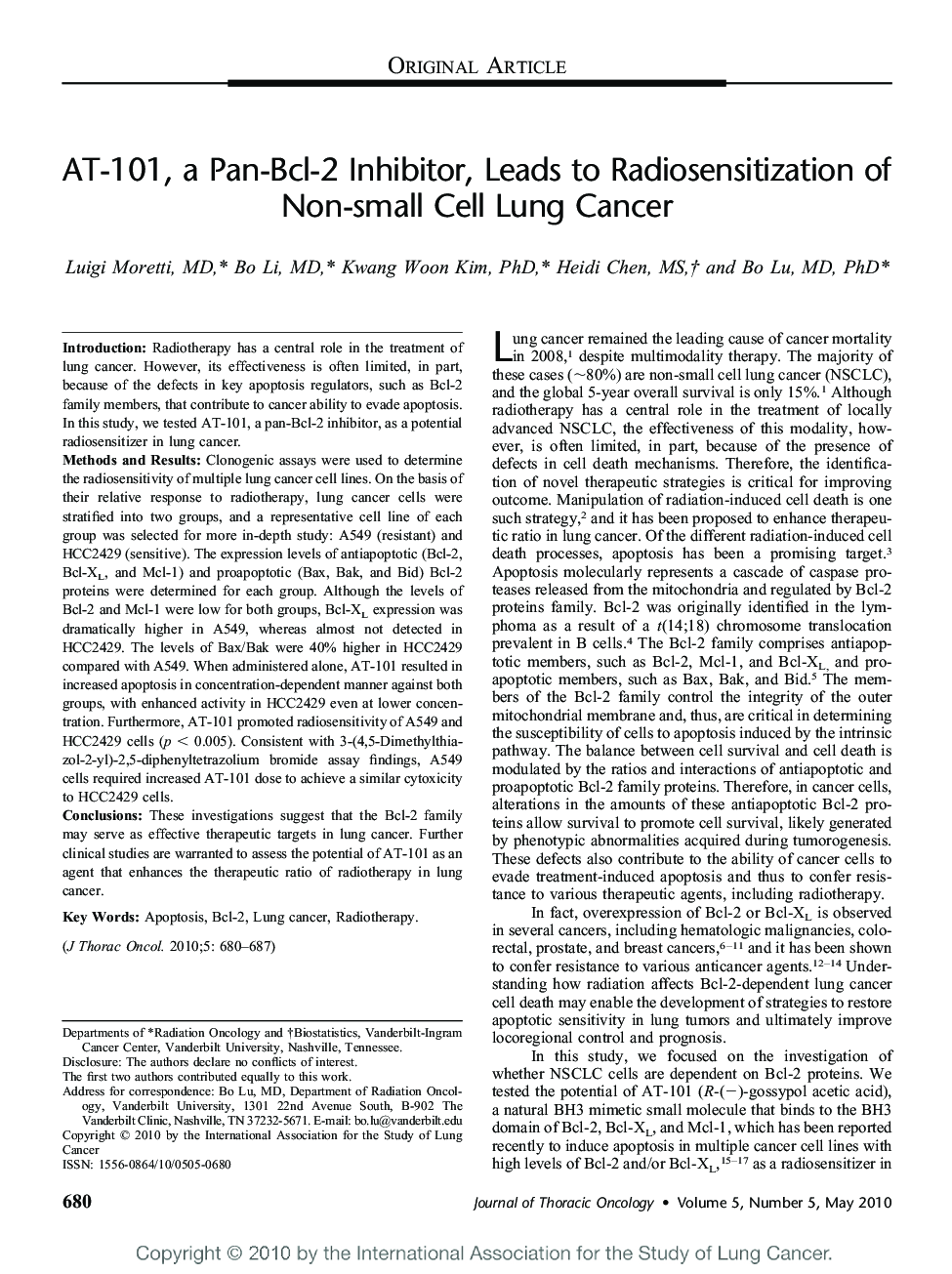| Article ID | Journal | Published Year | Pages | File Type |
|---|---|---|---|---|
| 3990918 | Journal of Thoracic Oncology | 2010 | 8 Pages |
IntroductionRadiotherapy has a central role in the treatment of lung cancer. However, its effectiveness is often limited, in part, because of the defects in key apoptosis regulators, such as Bcl-2 family members, that contribute to cancer ability to evade apoptosis. In this study, we tested AT-101, a pan-Bcl-2 inhibitor, as a potential radiosensitizer in lung cancer.Methods and ResultsClonogenic assays were used to determine the radiosensitivity of multiple lung cancer cell lines. On the basis of their relative response to radiotherapy, lung cancer cells were stratified into two groups, and a representative cell line of each group was selected for more in-depth study: A549 (resistant) and HCC2429 (sensitive). The expression levels of antiapoptotic (Bcl-2, Bcl-XL, and Mcl-1) and proapoptotic (Bax, Bak, and Bid) Bcl-2 proteins were determined for each group. Although the levels of Bcl-2 and Mcl-1 were low for both groups, Bcl-XL expression was dramatically higher in A549, whereas almost not detected in HCC2429. The levels of Bax/Bak were 40% higher in HCC2429 compared with A549. When administered alone, AT-101 resulted in increased apoptosis in concentration-dependent manner against both groups, with enhanced activity in HCC2429 even at lower concentration. Furthermore, AT-101 promoted radiosensitivity of A549 and HCC2429 cells (p < 0.005). Consistent with 3-(4,5-Dimethylthiazol-2-yl)-2,5-diphenyltetrazolium bromide assay findings, A549 cells required increased AT-101 dose to achieve a similar cytoxicity to HCC2429 cells.ConclusionsThese investigations suggest that the Bcl-2 family may serve as effective therapeutic targets in lung cancer. Further clinical studies are warranted to assess the potential of AT-101 as an agent that enhances the therapeutic ratio of radiotherapy in lung cancer.
